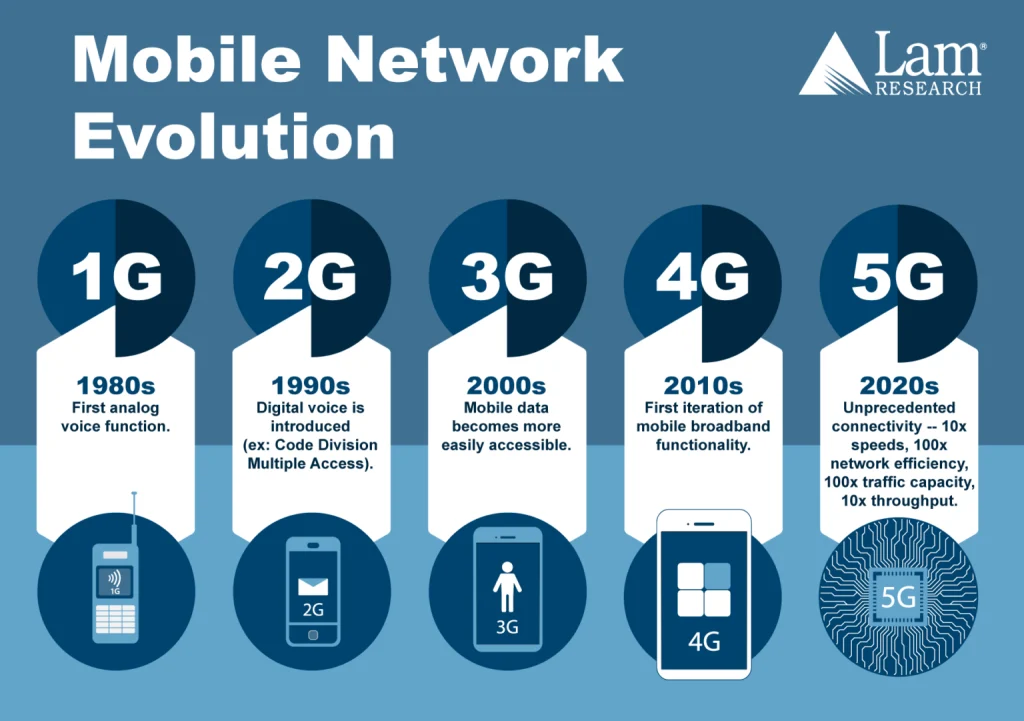What Does 5G Offer?
5G is the newest—the fifth—generation of mobile network technology, and it’s brought a wealth of benefits over its familiar predecessor, 4G. Before everything else, its primary improvement is the sheer speed of connectivity. 5G is up to an incredible one hundred times faster than 4G connectivity, and it’s this near-instantaneous data transfer that allows us to connect with real-time content like never before. In real-time content, delays have significant impacts on how we consume it, and with 5G, this is an issue of the past.
Similarly, but not quite the same as speed, latency is the time taken from data to travel from one point to another. 5G introduces ultra-low latency times, as low as one millisecond, which makes real-time interactions buttery smooth and quickly responsive. It’s especially crucial in virtual reality (VR) and augmented reality (AR), as well as in online gaming, as the slightest lag can completely ruin the immersion of an experience.
Finally, 5G supports a higher density of connected devices. This has a huge impact on live-streaming concerts and sports games where thousands of people may tune in, as it means the livestreams can support far more people connecting to a single event without the performance dropping.
Revolutionizing Live Streaming and Broadcasting
One of society’s favorite real-time connectivity applications is livestreaming, both on social media and professional broadcasts. It’s 5G that has made these forms of consumption so feasible and engaging. The higher bandwidth of 5G allows viewers to consume in 4K—or even up to 8K—resolution that brings crystal-clear images that we could previously only obtain on offline media. Content creators and broadcasters have embraced this boon and are reeling out far more immersive material than ever before.
Part of the immersion comes from the new interactive abilities on livestreams. Viewers can engage in content in brand-new ways, be that multi-angle views, real-time polls, or live chats. All of these are seamlessly integrated without a hint of lag, so viewers can not just watch but become a part of the content they consume. One example of this is sports broadcasters punting real-time statistics and putting out multiple camera angles so fans gain a fully immersive and personalized viewing experience.
Transforming Online Gaming
Any online gamer will know how vital low latency and quick speeds are when engaging in competitive gameplay. The slightest lag will decimate their stats and completely ruin the gameplay experience. It’s vital in many spheres of online gaming—whether MMO extravaganzas, the fast-paced shooting of CS:GO, or mobile gaming—where a moment’s delay can lead to players completely missing the key moment. Anyone enjoying a quick-paced real-time lightning roulette game knows that any lags can ruin the palpitating tension of waiting for the ball to land on that coveted lucky number for high multipliers on their rewards.
So, it’s a given that online gaming benefits from new 5G technology, especially in the growing realm of mobile gaming where gamers rely only on signal on the go. Gamers now enjoy an ultra-responsive, lag-free experience, even on graphically intensive games.
Cloud gaming is another territory of gaming that requires these ultra-quick 5G speeds. Games are streamed directly from servers rather than running on local hardware, and the industry has flourished since the advent of 5G’s low-latency capabilities with the introduction of even more advanced services. Gamers can enjoy high-quality games even on mobile devices and aren’t required to invest in expensive hardware.
Enabling Real-time IoT Applications
Cutting-edge Internet of Things (IoT) technology is reliant on 5G. Whether it’s smart home gadgets or industrial sensors, these complex networks of smart technology require reliable and fast connectivity to function properly. With the speeds offered by 5G, real-time communication creates far more intelligent and efficient systems than those offered by lower-speed mobile tech.
Smart cities are a key example of this and show the staggering heights of interconnectivity that 5G has enabled. Real-time data from various sensors placed across an entire city can monitor and manage its lifeblood in directing traffic flow, reducing energy consumption, and even improving public safety. Even on a smaller scale within single industries, 5G allows real-time monitoring and automation that increases productivity and reduces downtime.

